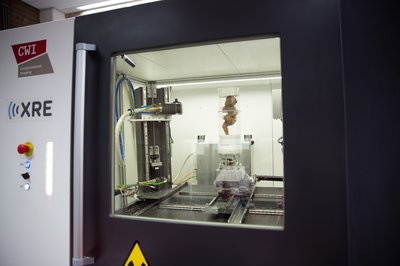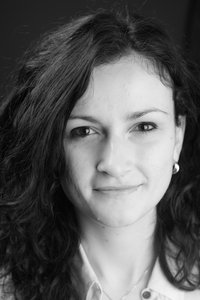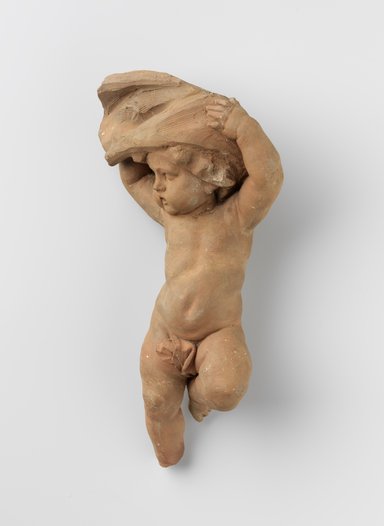
Can you determine the characteristics of the artist of a sculpture that is 280 years old? Dzemila Sero, former postdoc at CWI (now Migelien Gerritzen Fellow at Rijksmuseum) proved this is possible, together with a team of researchers from Centrum Wiskunde & informatica, Rijksmuseum, and Cambridge University. They examined the terracotta sculpture “Study for a Hovering Putto” from the Rijksmuseum permanent collection and attributed to Laurent Delvaux (1696 - 1778). To acquire preserved impressions on the sculpture, the researchers used the computed tomography machine located at the FleX-ray Lab. The results were published in Science Advances (open access) in a paper with the title "Artist profiling using micro-CT scanning of a Rijksmuseum terracotta sculpture".
Sero and her colleagues developed a pipeline to acquire preserved fingermarks and toolmarks on the visible surface, as well as the inside of the statue, using 3D micro Computed Tomography, and methods for quantitatively characterizing these impressions. On the basis of combined archaeology and forensics research, the authors estimate that the fingermarks of this specific piece of art belong to an adult male. When combined with technical, stylistic, and art historical information, their pipeline could make it easier to discern human impressions from toolmarks, especially when only a small section of the total epidermal mark is impressed or preserved, thereby adding a sound criterion to characterize artist’s practice.
About the project

The work started when Dzemila Sero was a postdoc in the Computational Imaging group at CWI. As a postdoc, Sero was part of the Impact4Art project (NWO, NICAS), conceived by Joost Batenburg (project leader) and Erma Hermens. Sero later obtained a Migelien Gerritzen Fellowship at the Rijksmuseum with her project “Imaging patterns on terracotta sculptures”. She studies patterns left by artists on artworks from Rijksmuseum collections, such as human prints, brush strokes and blade marks, using high resolution 2D and 3D imaging and computed tomography.
Fingerprint-based recognition systems are used for forensic and biometric applications. Recently, the study of partial fingermarks left on pottery from past artisans has attracted growing attention in cultural heritage. However, there is a gap of systematic research addressing 2D and 3D fingermarks left on fired clay objects from known authors and workshops at museum and private collections. In addition, computer vision expertise in analyzing such patterns is scarce. CWI’s expertise in the area of 3D tomography scanning is utilized to examine the characteristics of the artworks.

